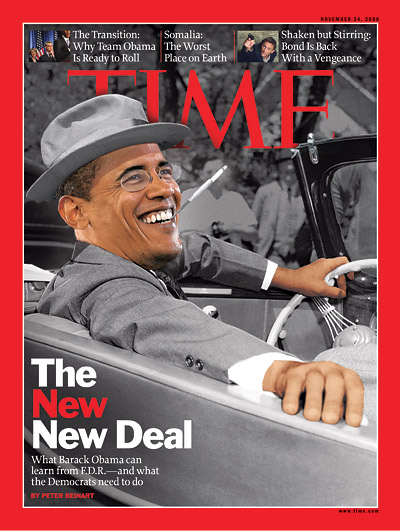Jerry Yang’s departure as Yahoo! CEO opens the door to a renewed bid by Microsoft to buy Yahoo!’s search business (or Yahoo! itself). Such a merger could produce a significantly stronger challenger to Google in the search market. With this possibility in mind, the WSJ just ran a fascinating history of the “paid search”  business—the placement of “contextually targeted” ads next to search engine results based on the search terms that produced those results.
business—the placement of “contextually targeted” ads next to search engine results based on the search terms that produced those results.
In a nutshell, Microsoft failed to see (back in 1998-2003) the enormous potential of paid search—just as small start-ups (such as Google) were starting to develop the technology and business model that today account for a $12+ billion/year industry, which is twice the size of the display ad market and which supports a great deal of the online content and services we have all come to take for granted online. Microsoft first put its toe in the water of paid search with a small-scale partnership with Goto.com in 1999-2000. But this partnership failed because of internal resistance from the managers of Microsoft’s display-ad program. In 2000, Google launched Adwords and thus began its transformation from start-up into economic colossus. By 2002, Microsoft realized that it needed to catchup fast, and approached Goto.com (by then renamed Overture) about a takeover. But Microsoft ultimately chose in 2003 not to buy the startup because Bill Gates and Steve Ballmer “balked at Overture’s valuation of $1 billion to $2 billion, arguing that Microsoft could create the same service for less.”
Microsoft, meanwhile, spent the next 18 months deploying hundreds of programmers to build a search engine and a search-ad service, which it code-named Moonshot. The company launched its search engine in late 2004 and its search-ad system in May 2006.
But Microsoft’s ad system came too late:
Advertisers applauded Moonshot for its technical innovation. But Microsoft had trouble coaxing people to migrate to its search engine from Google; advertisers were unwilling to spend large sums on MSN’s search ads. By building a new system instead of buying Overture, Mr. Mehdi says, “we really delayed our time to market.”
What’s most fascinating about the piece is that it seems to suggest that Microsoft missed its opportunities to get into paid search not because it was “dumb,” “uninnovative” or a “bad” company, but for the same sorts of reasons that big, highly successful and even particularly innovative companies fail. The reasons companies generally succeed in mastering “adaptive” innovation of the technologies behind their established business models are the very reasons why such great companies struggle to encourage or channel the “disruptive” innovation that renders their core technologies and business models obsolete. Continue reading →


 and Yahoo-widget-capable televisions described by the WSJ piece go a long way to increasing the substitutability of what we call Internet Video Programming Distributors (IVPDs) for Multichannel Video Programming Distributors (MVPDs), such as cable, satellite television and fiber services offered by telcos such as Verizon’s FiOS.
and Yahoo-widget-capable televisions described by the WSJ piece go a long way to increasing the substitutability of what we call Internet Video Programming Distributors (IVPDs) for Multichannel Video Programming Distributors (MVPDs), such as cable, satellite television and fiber services offered by telcos such as Verizon’s FiOS.  The Technology Liberation Front is the tech policy blog dedicated to keeping politicians' hands off the 'net and everything else related to technology.
The Technology Liberation Front is the tech policy blog dedicated to keeping politicians' hands off the 'net and everything else related to technology.